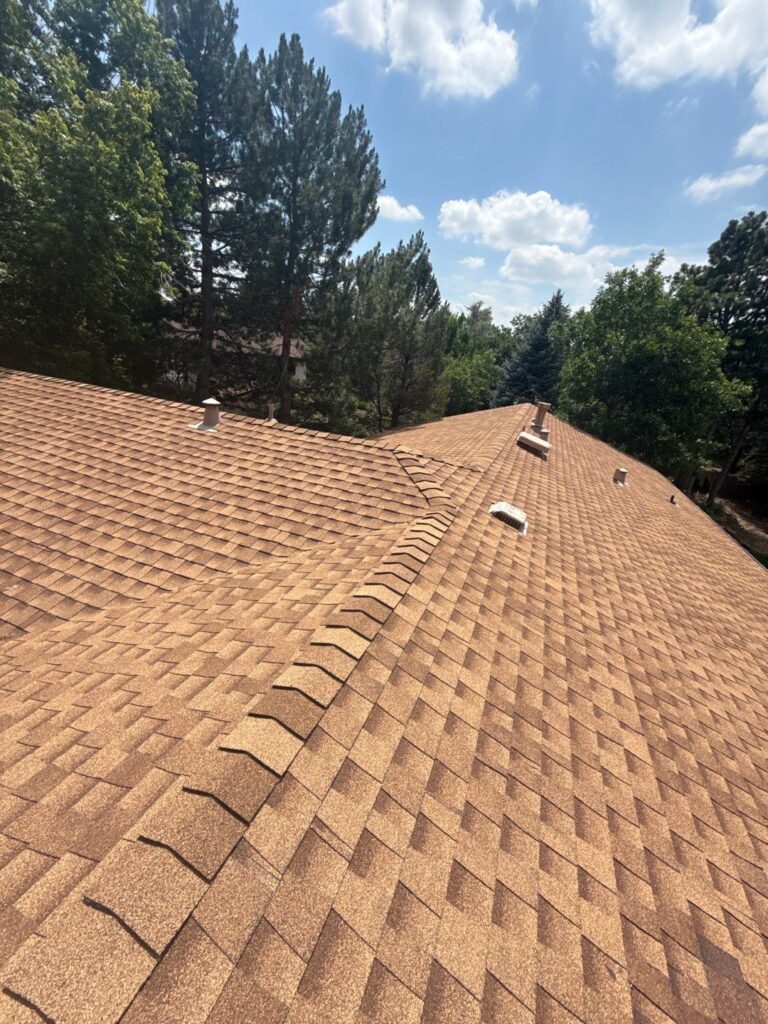
Understanding the Appearance of Hail Damage on a Roof
Hailstorms often leave behind subtle or severe damage on roofing systems. Recognizing these signs early is essential for preventing costly structural issues. Hail damage on a roof may not be instantly visible to the untrained eye, but the impact can significantly weaken the roofing materials. Knowing what to look for ensures you can take action before small problems escalate into leaks or full replacements.
Common Indicators of Hail Damage on Roofs
1. Shingle Bruising and Cracks
Hailstones can leave behind soft spots or bruises in asphalt shingles. These bruises may not penetrate the material immediately but can compromise the integrity of the shingle over time. With larger hailstones, visible cracks or complete shingle fractures can occur, especially when driven by strong winds.
2. Granule Loss
One of the most recognizable signs of hail impact is the loss of granules from the shingle surface. Granules provide UV protection and weatherproofing, so when hail knocks them off, the shingle’s base layer is exposed. These bare spots often appear as dark areas or smooth patches on the shingle surface. Excess granules may also accumulate in gutters and downspouts.
3. Shingle Displacement or Missing Sections
High-impact hail can dislodge shingles entirely, exposing the underlayment or decking. If you see sections of your roof where shingles are curled, lifted, or missing altogether, this is a strong indicator of hail damage that needs immediate attention.
4. Damage to Roof Fixtures
Hail doesn’t only damage shingles. Metal components such as flashing, vents, chimney caps, and skylight frames often bear dents and cracks. These are critical for sealing vulnerable roof intersections and must be inspected for storm-related harm.
5. Compromised Gutter Systems
Inspect your gutters and downspouts after a storm. Dents, bending, or cracked joints often point to hail impact. Gutter system damage can further lead to water misdirection, contributing to erosion or foundational water damage if left uncorrected.
Factors That Influence the Severity of Hail Roof Damage
Size and Shape of the Hail
The larger and more jagged the hailstones, the more severe the damage. Smooth, round hailstones are less likely to cause surface breakage than angular, crystalline ones, which can gouge, tear, or split roofing materials.
Wind Velocity
Wind speed during a hailstorm amplifies the force at which hailstones strike. Strong lateral winds can drive hail into a roof at an angle, increasing both the impact pressure and the scope of damage. Areas where wind velocity is higher may experience more isolated, intense destruction.
Roof Age and Material
Older roofs or those constructed with low-impact materials like three-tab asphalt shingles are more vulnerable. In contrast, newer roofs with impact-resistant materials can better withstand moderate hail without failing.
Slope and Orientation of the Roof
Roofs with flatter slopes or those facing the direction of the storm’s trajectory tend to receive the brunt of the impact. South or west-facing slopes in Denver, Colorado, often take the most damage due to regional storm patterns.
Risks of Ignoring Hail Damage
Failing to address hail damage promptly can lead to compounding problems:
- Water Intrusion: Cracks and broken shingles allow moisture infiltration, leading to attic leaks, mold growth, and interior wall damage.
- Structural Degradation: Persistent water entry can weaken wooden framing, insulation, and drywall systems, degrading the overall structural integrity.
- Higher Long-Term Repair Costs: Small, inexpensive repairs turn into full roof replacements when damage is allowed to spread.
- Insurance Claim Denials: Many insurance policies require timely damage reporting. Delay may result in coverage rejection or reduced payouts.
- Reduced Home Value: Homes with visible roof damage or signs of water staining often face appraisal issues or decreased buyer interest.
Professional Hail Damage Roof Inspections
Trained roofing professionals use industry-grade tools to identify hidden damage and document conditions for insurance claims. Infrared scanning, drone inspections, and tactile shingle analysis are all methods a reputable roofing company may use.
Look for experienced roofers in Denver who understand local storm patterns and material requirements. A good roofing contractor will provide a detailed report, photos, and a recommendation for either repair or replacement based on findings.
Hail Damage Repair Options for Residential Roofs
Minor Damage Repair
If the damage is limited to granule loss or a few dents, repairs may involve simple patchwork, sealing, or isolated shingle replacement.
Partial Roof Replacement
Moderate damage often requires replacing a section of the roof, especially if shingles are missing or multiple areas are compromised.
Full Roof Replacement
Severe hailstorms may make replacement more cost-effective than recurring repairs. If underlayment or decking has been damaged, a full overhaul ensures long-term performance and insurance compliance.
Always use certified contractors from reputable roofing companies in Denver Colorado, and get multiple estimates before proceeding.
When to Schedule an Inspection
- Immediately After a Hailstorm: Especially if the storm included large hail (over 1 inch in diameter).
- Before Filing an Insurance Claim: Roofing contractors can provide detailed assessments that strengthen your case.
- Before Buying or Selling a Home: Real estate transactions often hinge on the condition of the roof.
CONCLUSIONHail damage to a roof often appears subtle at first but can evolve into serious structural and financial problems if not addressed. Identifying signs such as cracked shingles, granule loss, or flashing dents is critical after any major storm. Timely inspection and repair protect both the longevity of your home and its resale value. Homeowners should trust experienced Denver roofers for reliable assessments and storm repair solutions. Tried and True Roofing, a trusted name in roofing in Denver, Colorado, provides dependable service tailored to local weather conditions and building standards.

